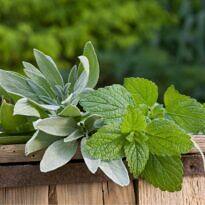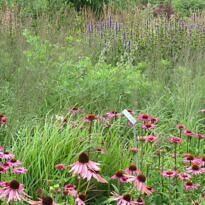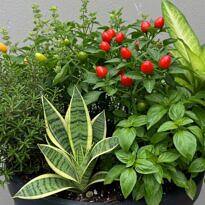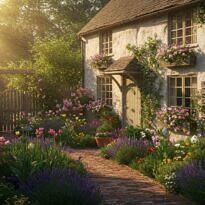A garden teeming with butterflies is like a living canvas of colors and motion, a visual symphony that captivates the gaze of all who pass by. These delicate winged insects have the power to evoke feelings of enchantment and tranquility. Creating a garden that lures them in requires care, planning, and knowledge. In this comprehensive guide, we will delve into the steps to transform your outdoor space into a butterfly haven, filling it with vibrant colors and life.
The Fascinating World of Butterflies
Before delving into gardening techniques, it’s important to understand a bit more about butterflies. They are essential pollinators for many plants, playing a crucial role in maintaining biodiversity. Moreover, their beautiful colorful wings result from complex genetic patterns that evolved to help them blend in or stand out in their natural environments. By attracting butterflies to your garden, you’re also contributing to the preservation of these magical beings.
Planning the Butterfly Garden
Choosing the Location and Sun Exposure
The first step in creating an appealing butterfly garden is selecting the right location. Most butterflies thrive in the sun, so opt for a spot that receives at least 6 hours of direct sunlight per day. Partially shaded areas can also be considered, but sunlight is a key factor in attracting these insects.
Selecting the Right Plants
Butterflies are drawn to certain plants, especially those rich in nectar. Plants with flowers in shades of red, orange, yellow, and pink are often favorites. Some popular options include:
- Buddleia (Butterfly Bush): As the name suggests, this plant is a magnet for butterflies. Its dense, fragrant flowers provide an abundant source of nectar.
- Lantana: With its vibrant inflorescences, lantana is another popular choice for attracting butterflies. It blooms throughout the summer.
- Zinnias: Available in a variety of colors, zinnias are a versatile and attractive option for butterflies.
- Verbena: With its umbrella-shaped flowers, verbena is a low-maintenance plant that butterflies love.
- Echinacea (Coneflower): Known for its distinctive cone-shaped center, echinacea provides nectar and adds a pop of color to your garden.
- Salvia: With its tall spikes of blossoms, salvia offers a rich source of nectar and attracts various butterfly species.
- Aster: These daisy-like flowers bloom in late summer and fall, providing a late-season food source for butterflies.
- Coreopsis: Featuring cheerful yellow blooms, coreopsis is a favorite among butterflies and adds a touch of brightness.
- Phlox: Fragrant and colorful, phlox is a magnet for butterflies and adds a lovely fragrance to your garden.
- Rudbeckia (Black-eyed Susan): These golden flowers are not only appealing to butterflies but also attract other pollinators.
- Gaillardia (Blanket Flower): Gaillardia’s striking red and yellow petals are sure to catch the eyes of passing butterflies.
- Monarda (Bee Balm): With its unique flower clusters, monarda offers both nectar and aromatic foliage.
- Liatris (Gayfeather): Tall spikes of feathery blooms make liatris a standout in your garden, attracting butterflies from a distance.
- Helenium: These daisy-like flowers come in shades of red, orange, and yellow, providing a varied feast for butterflies.
- Digitalis (Foxglove): Tall spires of tubular flowers attract butterflies seeking nectar in hard-to-reach places.
- Agastache: Its tubular flowers and minty fragrance are irresistible to butterflies and hummingbirds alike.
- Milkweed: A vital host plant for monarch butterflies, milkweed is essential for their lifecycle.
- Penstemon: Available in various colors, penstemon’s tubular flowers are well-suited for long-tongued butterflies.
- Delphinium: The tall spikes of delphinium offer a vertical element and nectar source for butterflies.
- Anemone: Late-season blooming anemones provide sustenance for butterflies as summer wanes.
- Joe-Pye Weed: With its pink-purple flower clusters, Joe-Pye weed attracts a variety of butterfly species.
- Coneflower (Ratibida): Similar to echinacea, coneflower species like Ratibida columnifera offer a different look and nectar source.
- Borage: Both the flowers and leaves of borage are edible and attract butterflies and bees.
- Cosmos: These daisy-like flowers are easy to grow and come in a range of colors, attracting numerous pollinators.
- Yarrow: Yarrow’s flat-topped flower clusters provide a landing pad for butterflies to feed.
- Hollyhock: Tall and majestic, hollyhocks offer a vertical element and nectar source.
- Joe-Pye Weed: With its clusters of tiny flowers, Joe-Pye weed is a favorite of swallowtails and admirals.
- Goldenrod: A late-season bloomer, goldenrod is a critical nectar source for butterflies preparing for migration.
- Achillea (Yarrow): Available in various colors, yarrow’s flat flower heads are highly attractive to butterflies.
Create a Variety of Heights and Textures
Butterflies are not only attracted to colors and nectar but also seek shelter and places to rest. Plant a variety of plants with different heights and textures to provide landing and sheltering spots. Shrubs, tall flowers, and ornamental grasses can be combined to create a diverse landscape.
Building the Right Habitat
Water and Moisture
Just like flowers, water is essential for attracting butterflies. They need to drink water and absorb minerals from moist surfaces. Create shallow areas with stones where water can accumulate, providing a place for butterflies to refresh themselves.
Avoid Excessive Pesticide Use
Pesticides can be harmful not only to pests but also to beneficial insects like butterflies. Opt for more natural and less aggressive pest control methods to ensure your garden is a healthy environment for all.
Integrate Host Plants
In addition to nectar-rich flowers, it’s important to integrate host plants in your garden. Adult butterflies lay their eggs on these plants, and the emerging caterpillars feed on them. For example, the Asclepias plant is the host plant for monarch butterfly caterpillars. Read More: 17 Host Plants: Nourishing the Butterfly Life Cycle
Maintenance and Care
Regular Pruning
Keeping your garden well-pruned is essential to ensure butterflies have easy access to flowers and to prevent plants from taking over the space.
Providing Year-Round Food
Plan your garden to have flowers blooming in different seasons so that butterflies always find food. This is particularly important during spring and fall when flower availability might be more limited.
Continuous Observation and Learning
Each garden is unique and attracts different butterfly species based on your geographical location and the plants you’ve chosen. Take time to observe which species frequent your garden and learn more about their specific needs to further optimize your space.
Creating a butterfly-attracting garden is a rewarding endeavor that enriches not only the aesthetics of your space but also the local biodiversity. With careful planning, the right plant choices, and a conducive environment, you can transform your garden into a charming haven for these winged creatures. Remember that patience is key; as butterflies find their way to your garden, you’ll be rewarded with a spectacle of colors and motion that will touch your heart and nurture your soul.










